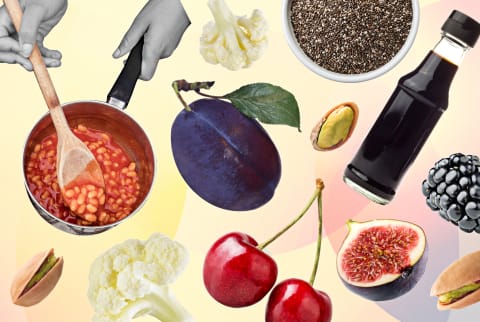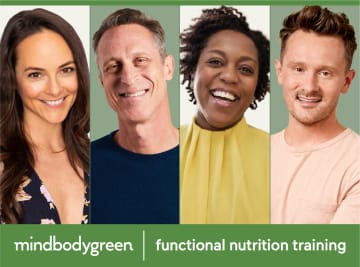The Ultimate Gluten-Free Food List: What To Eat & What To Avoid


When it comes to understanding a gluten-free diet, some things are more obvious than others.
If you know that gluten is a protein found in wheat, barley, and rye, then avoiding those three grains seems obvious. But what about the sauces, packaged goods, and other dishes that may contain hidden sources of gluten?
To make your gluten-free journey less overwhelming, we rounded up 62 foods you can eat, along with guidelines on which foods to avoid. With the help of registered dietitians, here is your definitive gluten-free food list.
Grains
Grains may be one of the most confusing food groups when it comes to gluten.
Many people assume all grains are off-limits—but that's not the case, a number of grains are naturally gluten-free. That said, it's important to check food labels. If the grains were processed in facilities that contain gluten, it's possible for cross-contamination to occur.
Without cross-contamination, though, these seven grains are generally free of gluten and safe to eat for people with allergies or intolerances. Most of them can be made into gluten-free bread or gluten-free flour for all your baking needs.
Grains to avoid:
- All wheat derivatives (whole wheat bread, all-purpose flour, wheat pasta, etc.)
- Rye
- Barley (and malt)
- Couscous
- Orzo
- Farro
- Spelt
- Oats not labeled gluten-free
Proteins
"Most poultry, seafood, and meat in their whole, minimally processed forms are naturally gluten-free," registered dietitian and nutritionist Maya Feller, M.S., R.D., CDN, tells mindbodygreen.
If the animal protein has been processed, though, she suggests checking the label to verify it was made without fillers and is verified gluten-free.
Looking for the gluten-free label on plant-based proteins is also important, Feller says, "while also noting if the item was processed in a facility that processes gluten." This eliminates the possibility of cross-contamination.
As long as you've checked all of the labels, these six animal- and plant-based proteins should be gluten-free:
- Beans (chickpeas, black beans, cannellini beans, etc.)
- Nuts (almonds, pistachios, walnuts, etc.)
- Seeds (chia, flax, hemp, pumpkin, etc.)
- Eggs
- Fish
- Lentils
Proteins to look out for:
- Meatballs or meat patties (may contain breadcrumbs for binding)
- Breaded and/or fried proteins
- Anything processed, including deli meats, ready-made meals, or plant-based meat substitutes
Fruits and vegetables
According to registered dietitian and mbg Collective member Jess Cording, M.S., R.D., CDN, "Fruits and vegetables are inherently gluten-free. If they're in the context of a food containing other ingredients, though, it's possible there may be gluten in that food."
In their raw, unprocessed form, these are just 30+ of the many, many fruits and vegetables that are gluten-free:
- Apples
- Stone fruits (apricots, peaches, plums, nectarine, etc.)
- Bananas
- Berries (blackberries, blueberries, raspberries, strawberries)
- Pears
- Citrus fruits (lemons, limes, grapefruit, oranges, etc.)
- Cherries
- Melons (cantaloupe, honeydew, watermelon)
- Grapes
- Guava
- Kiwi
- Mango
- Pineapple
- Pomegranate
- Artichoke
- Asparagus
- Brussels sprouts
- Cauliflower
- Dark leafy greens (kale, spinach, bok choy, broccoli, etc.)
- Carrots
- Mushrooms
- Onions
- Cucumber
- Celery
- Cabbage
- Corn
- Jicama
- Bell peppers
- Potatoes/sweet potatoes
- Squash/zucchini
Fruits and vegetables to look out for:
Any fruits or veggies that have been processed and packaged, including:
- Dried or dehydrated
- Canned or frozen
- Pre-sliced and packaged
Dairy
Similar to fruits and veggies, dairy products alone are generally gluten-free. "But sometimes, gluten-containing ingredients are added to dairy products," says nutritionist Frances Largeman-Roth, RDN. "For example, some yogurts contain 'modified food starch,' which is a thickening agent that can be made from wheat."
Keep an eye out for flavoring agents and sweeteners, as well, as those may contain gluten. These seven dairy products are generally gluten-free, but look for the gluten-free certification label to double-check.
- Milk
- Butter
- Ghee
- Yogurt
- Kefir
- Heavy cream
- Cottage cheese
Dairy to avoid:
- Malted milk products
- Looking out for anything with added thickeners or sweeteners
- Yogurts or ice cream that contains cookies, cereals, granola, or other mix-ins
- Flavored milks
- Beer cheese
Condiments
Condiments and marinades can make or break a meal when it comes to flavor, but they can also sneak hidden glutens (and sugars, for that matter) into your dish.
Just like you should with all of the foods on this list, be sure to check the labels of any condiments you may buy.
Registered dietitian and nutritionist Isabel Smith, R.D., CDN, says to look out for "anything with the word malt in it, caramel coloring, baking powder, and citric acid, which is sometimes made with fermented wheat."
If you're looking to flavor your meal, Smith suggests using fresh or dried herbs, olive oil, salt, pepper, citrus juice, and tomatoes or tomato sauce. Additionally, any of these four condiments are generally gluten-free:
- Tamari
- Coconut aminos
- White vinegar
- Apple cider vinegar
Condiments to look out for:
- Soy sauce
- Malt vinegar and some rice vinegar
- Ketchup, mayonnaise, hot sauce, and mustards are generally gluten-free, but always check the labels since they can be made differently
Oils and fats
Oils and fats are other alternatives to condiments that can amplify a meal's natural flavor.
While they are naturally gluten-free, Cording says the foods they're consumed with might not be, so you also have to be mindful of cross-contamination.
For example, "nut and seed butters don't contain gluten, but you have to be careful not to dip a knife that just touched wheat bread into the jar."
When cross-contamination and ingredient lists have been taken into account, this list of oils and fats should be safe on a gluten-free diet:
- Olive oil
- Avocado oil
- Coconut oil
- Avocado
- Ghee
- Butter
- Nuts
- Seeds
Fats and oils to look out for:
Nut butters and seed butters are generally gluten-free, but depending on where they're manufactured may contain gluten from cross-contamination.
Bottom line.
There are a number of gluten-free foods to choose from, even beyond the specific ones noted on this list.
Just be sure to follow these guidelines to help select a truly gluten-free option. Also, remember to always double-check your food labels, especially if you have a severe allergy or intolerance to gluten.

Abby Moore is an editorial operations manager at mindbodygreen. She earned a B.A. in Journalism from The University of Texas at Austin and has previously written for Tribeza magazine. She has covered topics ranging from regenerative agriculture to celebrity entrepreneurship. Moore worked on the copywriting and marketing team at Siete Family Foods before moving to New York.
